A rarity cabinet opens hatch by hatch, door by door, events and objects stream out and tell the story of Hetty’s life. It’s funny, creepy, engaging. Jaap den Hertog’s family story enchants us and opens our reflections to themes we are surrounded by daily, through media, at school, in leisure and work: War and persecution of groups of people, often minorities.
How can we cope with war and persecution without being destroyed? What becomes important in times of crisis? Are these things just as important in peace time? What is your choice: Humanity over prejudice, openness over hate rhetoric, contact over closed doors?
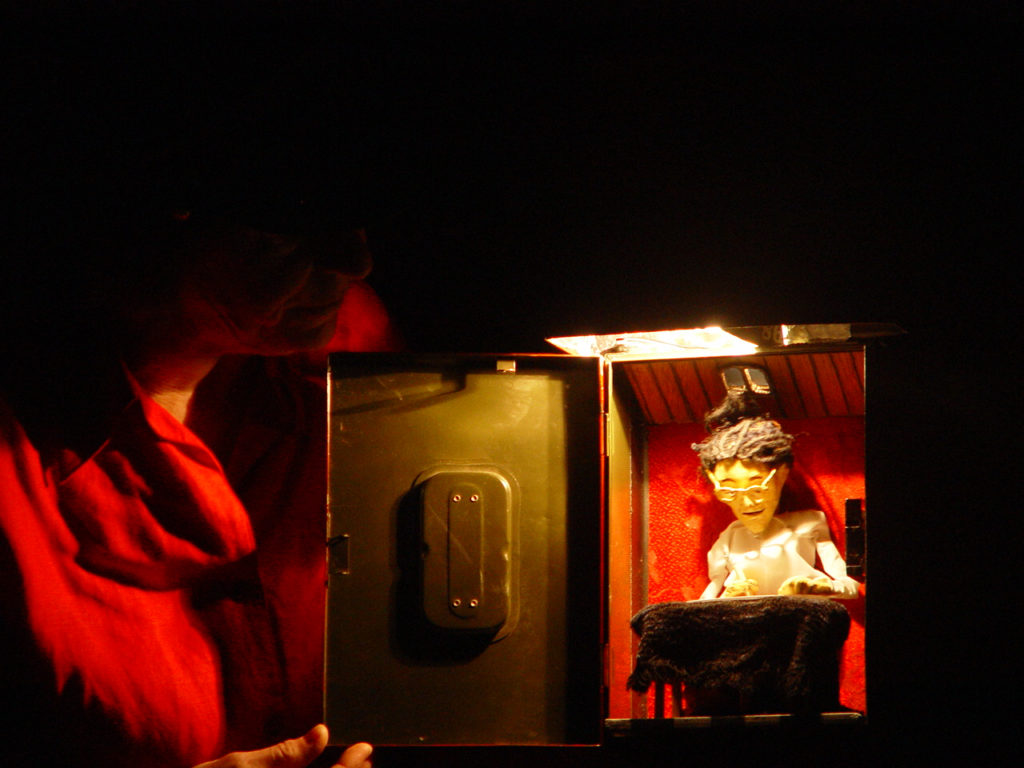
The performance was well described during the fourth international puppet festival in Klaipeda, Lithuania:
An old woman on her deathbed tells her grandchildren about the family’s complicated history. How her eccentric relatives married, started their business, argued, and reconciled before World War II began. The large family was wiped out in the concentration camp crematoria. Only two youngsters managed to escape…
The actors J. den Hertog and Coby Omvlee make use of a “cabinet theatre” (set designers Inka Lill and Gunnar Fretheim). In the closet different characters appear in dozens of opening doors, windows and drawers. Sometimes the action stops and they turn to the children with questions: What do you think when you hear the word “war”? Do you know who Adolf Hitler was? Which crimes did he commit? … There is a deathly silence on stage as an actress folds up the collar on her black coat and the SS markings become visible.
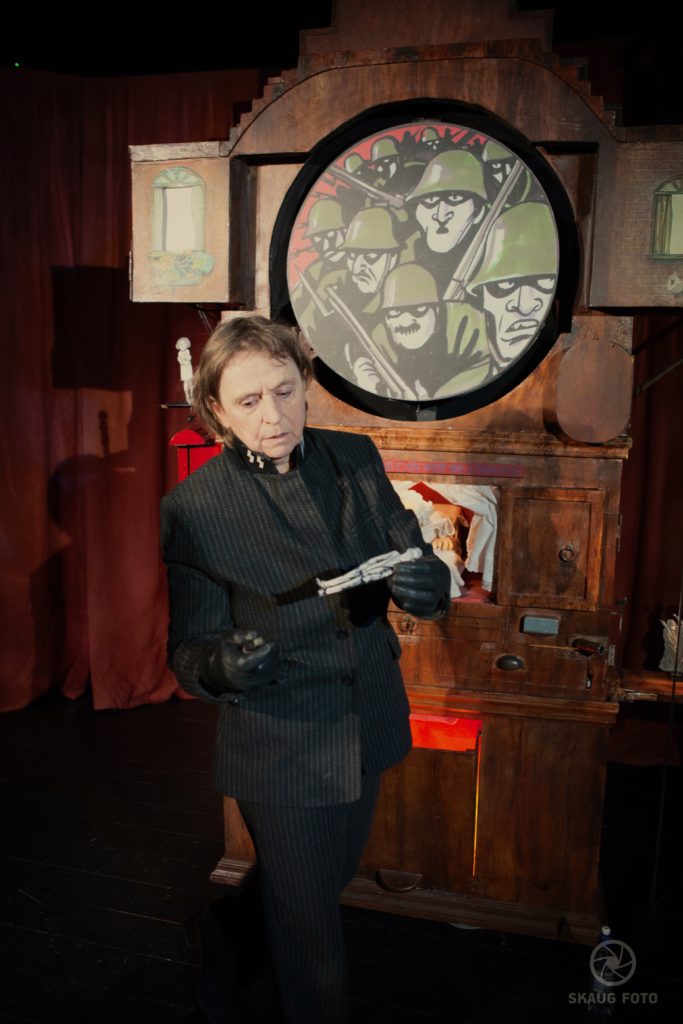
At the front of the stage a confused person defends himself during an interrogation. A female person, who embodies Nazism, takes a slow step in the direction of a picture of a Jewish family hanging on the cabinet. Slowly she pulls out one of the Jew’s silhouettes from the image, leaving a dark, faceless shadow instead of a human. Slowly she opens the door at the bottom of the cabinet, where a red light shows up. … After having thrown the silhouette in, she kicks the door closed with a bang. The interrogation continues. In the same way other the other family members end up being thrown into the “furnace”. In the picture, only two young people remain, surrounded by dark shadows. An aptly expressive detail, an unconventional solution that moves the imagination.” Reviewed by B.d
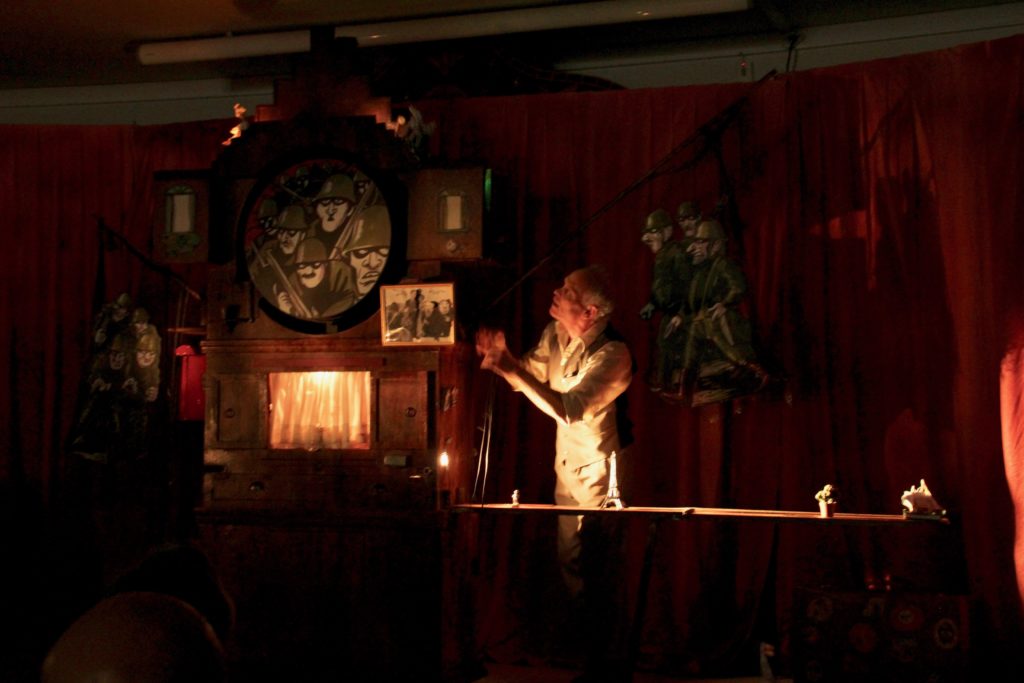
By experiencing Sand between the toes together, a golden opportunity is created to discuss the scary aspects of life in a good way.
The show has received several awards, including Birgit Strøm’s Memorial Prize for best figure theatre performance with societal relevance. The grounds of the jury: “… raising serious themes, told with warmth and humor. … The performance has great technical qualities and it utilizes all tools of the theatre – it provides space for both the actors, the figure characters and the audience. The performance tells a strong story, a personal story. It also questions what makes life worth living … “
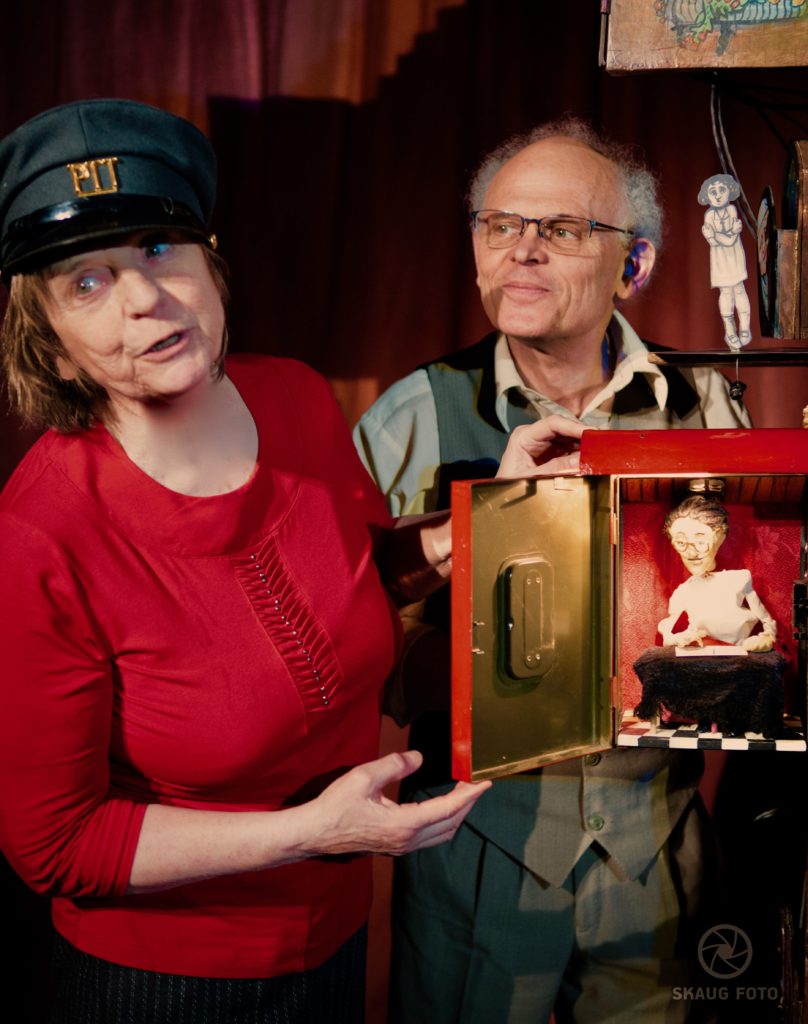
Supported by Fond for Lyd og Bilde (Foundation for Sound and Image), Fond for Utøvende Kunstnere (Foundation for Performing Artists), European Association for Jewish Culture, Sør-Trøndelag County Council.
About Hetty
Hetty was born just before the shot in Sarajevo, and died just before September 11th, 2001. She became Jaap’s Jewish grandmother by marrying Jaap’s grandfather when her husband, the grandfather’s brother, died.)
Hetty was sort of an anti-hero. She was not that brave. She was not of the confident kind. She was full of questions. She looked at the world with wonder embedded in a large portion of humor. And she had a talent to make friends with people she met. She stated, “A stranger is a friend you don’t know yet.” Naive? Maybe. But this trait helped her to help her fate. Helped her survive war and loss. Still today, Hetty’s friends still living tell us how Hetty’s view of the world affected them. They tell us of a lot of laughter and that a great many anecdotes were generated by her.
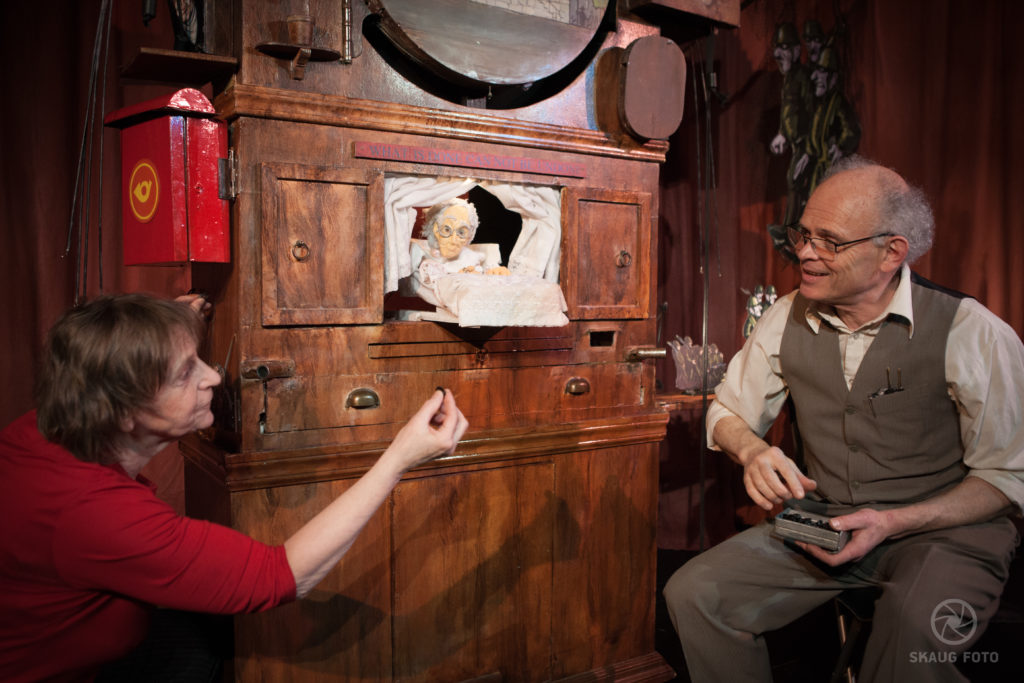
Hetty was a kind of anti-hero. She was not above average brave. For Teater Fusentast, Hetty is an idol. As we grow old, we want to be like her: as interested in the world, people, politics, travel and the arts; as fun and fun-loving and with lots of love.
Her last days were not good. She was parked. Dement in a stately old home, in clothes she would never have chosen, far away from her circle of friends and accustomed surroundings. Lonely, no longer able to make her own decisions. Dependent. We lived in another country, far away and it felt very bad.
Hetty died. Her Jewish burial was a pure insult to the generous person she had been. The next day, Jaap decided to make a theatre piece to honour her, and to share her unique being and adventure with the rest of the world.
In order to convey her life before, during and after World War II, we have created Hetty’s Rarity Cabinet. The performance is presented as a visual box with a lot of humor. The cabinet itself is a wellspring of drawers, doors, windows, small quirky items and dolls. Jaap made the dolls, InkaLill drew the paper dolls. Just as we think Hetty herself would have liked it.
Thanks to
Family and friends who have contributed with their stories and information about Hetty.